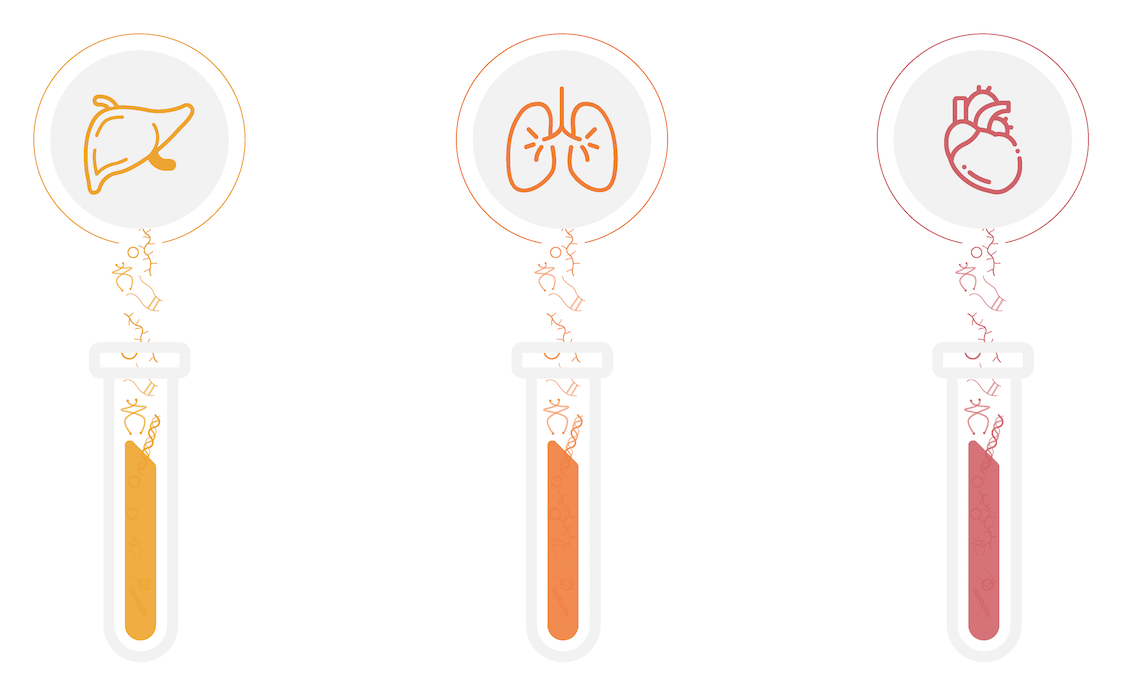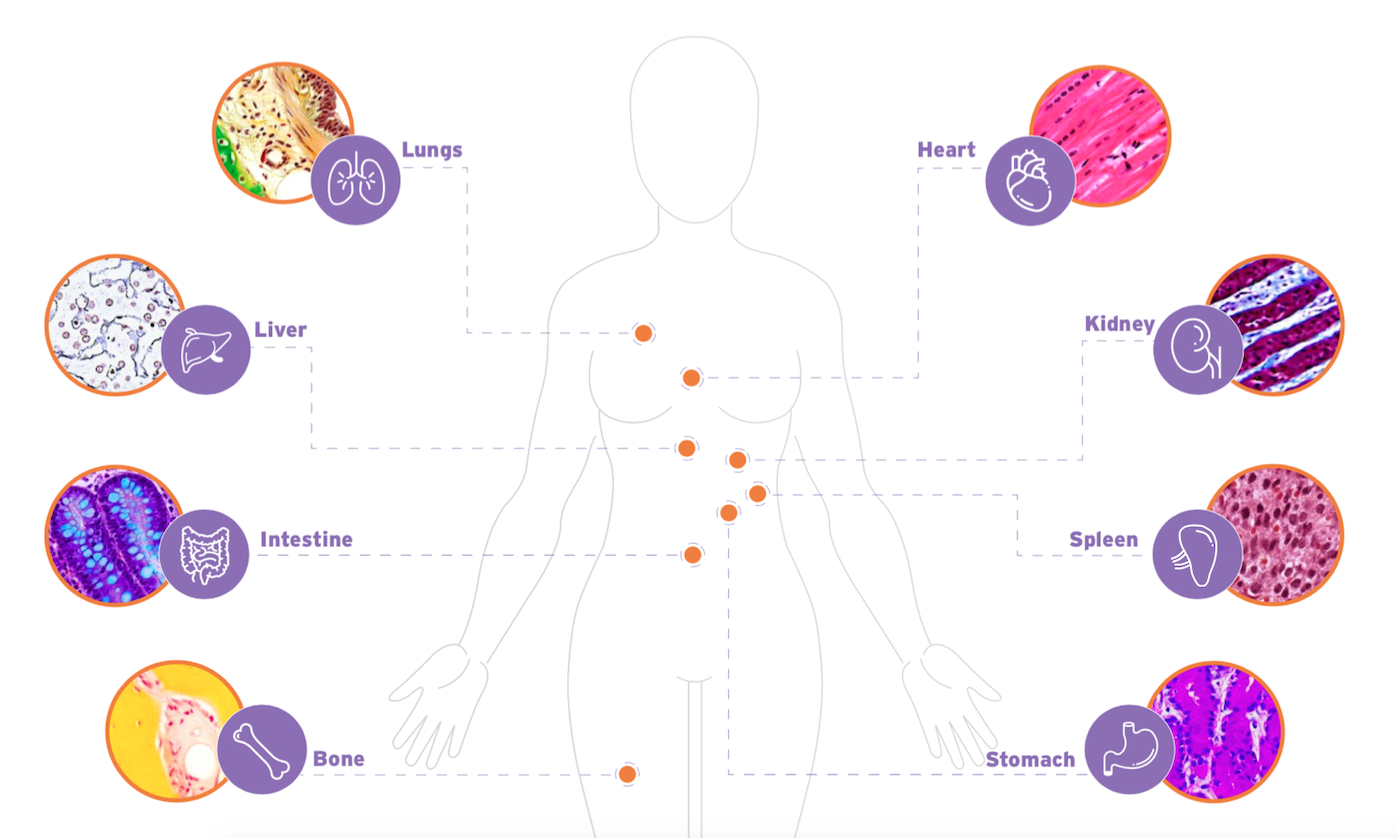 Regenerative Medicine in general is an extremely ambitious undertaking. There remain major barriers to understanding the full set of conditions required to make mature, functional human tissues by recapitulating a minimum set of conditions to make a functional body part. Strategies to make functional units for organs such as lung or liver are extremely complex: complex materials, complex bioreactor systems, etc. There is still a long way to go and Xylyx sees the use of extracellular matrix (ECM) biomaterials as an absolutely essential part of it all.
Regenerative Medicine in general is an extremely ambitious undertaking. There remain major barriers to understanding the full set of conditions required to make mature, functional human tissues by recapitulating a minimum set of conditions to make a functional body part. Strategies to make functional units for organs such as lung or liver are extremely complex: complex materials, complex bioreactor systems, etc. There is still a long way to go and Xylyx sees the use of extracellular matrix (ECM) biomaterials as an absolutely essential part of it all.
Xylyx Bio’s driving mission and passion is to create and deliver effective science-based solutions for the benefit of human life and health. “Regenerative medicine holds great potential to be enormously impactful by enabling people to live longer, healthier lives,” said Andrea Nye, CEO of Xylyx Bio, adding, “We are honored to be in a position to support regenerative medicine efforts to make meaningful differences in the quality and duration of human life.”
Xylyx Bio (www.xylyxbio.com) spun out of Columbia University’s renowned Laboratory for Stem Cell and Tissue Engineering in 2016 to commercialize matrix bioactives for tissue regeneration and complete cell health. “Just as the environment matters at the macro scale for plants and animals, it is essential at the micro scale for cells,” explained John O’ Neill, Founder and Chief Scientific Officer at Xylyx. Recognizing the importance of the native cellular microenvironment, Xylyx Bio is harnessing the power of tissue-specific extracellular matrix, the body’s native cell environment, for both drug discovery and tissue regeneration.
“While the ability of the human body to regenerate holds potential, it also involves natural limitations due to the complexities involved in regeneration,” said Nye, adding, “To help address this challenge, Xylyx developed a platform technology that can serve as a basis to instruct and guide regeneration by leveraging the body’s natural mechanisms that have evolved over time based on fundamental interactions between cells and the ECM in which those cells naturally reside.”

By sourcing extracellular matrix from native organs and tissues, Xylyx produces tissue-specific substrates that comprise both the mechanical properties and complex ratios of ECM components specific and unique to each tissue and organ type. Depending on the need and intended use, Xylyx products are sourced from human or animal sources. The company obtains natural porcine tissues from suppliers of medical grade tissue, and donated human organs rejected for transplantation or explanted tissue from consented donors. Xylyx products are offered in a variety of formats at various concentrations, including tissue-specific hydrogels, surface coatings, and acellular scaffolds.
“For successful tissue engineering, it is critical that all the components of the tissue engineering triad be tailored to a specific tissue application – that is, a biomaterial to serve as a structural substrate, a cell source to facilitate tissue formation, and growth factors to direct cell growth and differentiation,” O’Neill explained, “When developing bio-inspired replacement tissues, the tissue-specific three-dimensional (3D) biomaterial scaffolds and other products that Xylyx manufactures play a critical role in the development of new tissue morphogenesis via interaction with human cells.”
“We were introduced to ARMI by Mara Neal, Director of Strategic Alliances at Cook Regentec,” commented Nye. “With over 30 years’ experience in the laboratory diagnostics space and over 12 years’ experience helping academic innovators commercialize their innovations, Mara intimately understands the challenges and barriers involved in bringing new technologies to market. She was part of the Coulter Foundation when it supported the Xylyx technology at Columbia University, before the company was even formed, and has provided the company with a vital source of support and encouragement through her expertise, deep knowledge and professional network. We were thrilled when Mara told us about the opportunities that membership in ARMI could provide.”
“In terms of the future of regenerative medicine, we expect to see an explosion in next-generation bioactive therapies. The conventional approach has been one drug, one molecule, or one compound delivered in its molecular form with one or two target effects and associated potential off-target effects,” explained O’Neill, adding, “A deeper understanding of the comprehensive nature of tissues and cells and their interaction with the cellular microenvironment – that is, the extracellular matrix – will likely lead to a paradigm shift to therapeutics and treatments that are more comprehensive in scope. In addition, the emergence of ECM as a bioactive class of biomaterials that can be deployed on its own or as a carrier for other therapies is likely to be an exciting new area of exploration.”

“Through ARMI, Xylyx will be ideally positioned to work closely with other members towards integrating extracellular matrix as a bioactive class of biomaterials,” said John O’Neill, adding,” We hope to establish close collaborations, support meaningful work and share and provide our resources towards the goal of contributing to the field of regenerative medicine. It’s going to take collaborative teamwork and an “army” (ARMI!) of like-minded people working together towards the same goal,” he concluded.
Xylyx brings to the ARMI community the ability to help support the development of useful equipment, protocols and an extensive library of ECM biomaterials that can be used for biomedical research, evaluation and as a component in tissue-engineered medical products. Xylyx is open to collaboration and partnerships and sees this as a critical part of the path to growth and success of the company as well as the field, “We welcome opportunities to work with members of the ARMI community!” said Nye.






